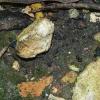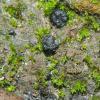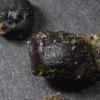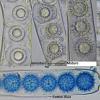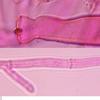
15-12-2025 15:48
 Danny Newman
Danny Newman
Melanospora cf. lagenaria on old, rotting, fallen

15-12-2025 15:54
 Johan Boonefaes
Johan Boonefaes
Unknown anamorph found on the ground in coastal sa

15-12-2025 21:11
 Hardware Tony
Hardware Tony
Small clavate hairs, negative croziers and IKI bb

15-12-2025 07:09
 Danny Newman
Danny Newman
indet. Rutstroemiaceae sp. on unk. fallen leavesMc

15-12-2025 07:05
 Danny Newman
Danny Newman
Pseudosclerococcum golindoi (det: Zotto)near Cosb

15-12-2025 11:49
 Danny Newman
Danny Newman
ITS sequences from the following two collections B

15-12-2025 12:34
 Danny Newman
Danny Newman
indet. Rhytismataceae on oak leafnear Purchase Roa

09-12-2025 12:06
 Andgelo Mombert
Andgelo Mombert
Bonjour,Je recherche l'article concernant Hypobryo
ID help - brown globules
Carmel Sammut,
04-02-2017 17:54
The globular ascoma are small 2-5mm in size, reddish brown to dark brown.
Asci: 8 spored, IKI +ve (faint diffused), pleurorhynchus, large 287-327 x 25-33µm
Paraphsis: Thin, very abundant
Spores: Rounded and echinulate. Different stages of maturity observed in same specimen. An outer layer is present at the immature stages. Size: 18.2-20.7 x 17.5-20µm measured inside ascus - no free spores observed.
My initial suspicion is on Sphaerosoma echinulatum but the spores are quite smaller, perhaps because not fully mature spores have been measured?
What do you think?
Lothar Krieglsteiner,
04-02-2017 18:13

Re : ID help - brown globules
Very interesting. I first thought of Ruhlandiella berolinensis with a similar spore size. The spores of this taxon are reticulate, anyhow. ...
Best regards from Lothar
Nicolas VAN VOOREN,
04-02-2017 18:51

Re : ID help - brown globules
I think this is a Boudiera species.
Carmel Sammut,
04-02-2017 19:41
Re : ID help - brown globules
Thanks for your input.
I argee Nicolas, it is probaby a Boudiera or somethin close.
The taxon Sphaerosoma echinulatum Seaver was transferred to Boudiera by Seaver himself.
I argee Nicolas, it is probaby a Boudiera or somethin close.
The taxon Sphaerosoma echinulatum Seaver was transferred to Boudiera by Seaver himself.
Carmel Sammut,
05-02-2017 19:27
Re : ID help - brown globules
Thanks Lothar - as you say there is no reticulation on the spores.
I have looked at some species of Boudiera, as suggested, but I am having some difficulty to match it. Apart from the smaller spore size, the paraphyses in my specimen are thin and uninflated (4-5µm). There is also the question of the asci being pleurorhynchus. Boudiera acanthospora, B. areolata and B. tracheia are all aporhynchus. Now I am looking for info on B. denisii to compare.
Could species in the same genus have different ascus development/attachment?
I have looked at some species of Boudiera, as suggested, but I am having some difficulty to match it. Apart from the smaller spore size, the paraphyses in my specimen are thin and uninflated (4-5µm). There is also the question of the asci being pleurorhynchus. Boudiera acanthospora, B. areolata and B. tracheia are all aporhynchus. Now I am looking for info on B. denisii to compare.
Could species in the same genus have different ascus development/attachment?
Viktorie Halasu,
05-02-2017 20:39

Re : ID help - brown globules
Yes, there are both kinds of base in one genus, e.g. Aleuria (A. aurantia = simple septate, others with two septa) or Peziza (small group of simple septate species). If such genus is still monophyletic, that's another question.
Carmel Sammut,
05-02-2017 21:41
Re : ID help - brown globules
Thanks for clarifying, Viktorie
